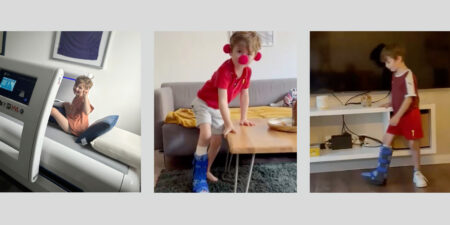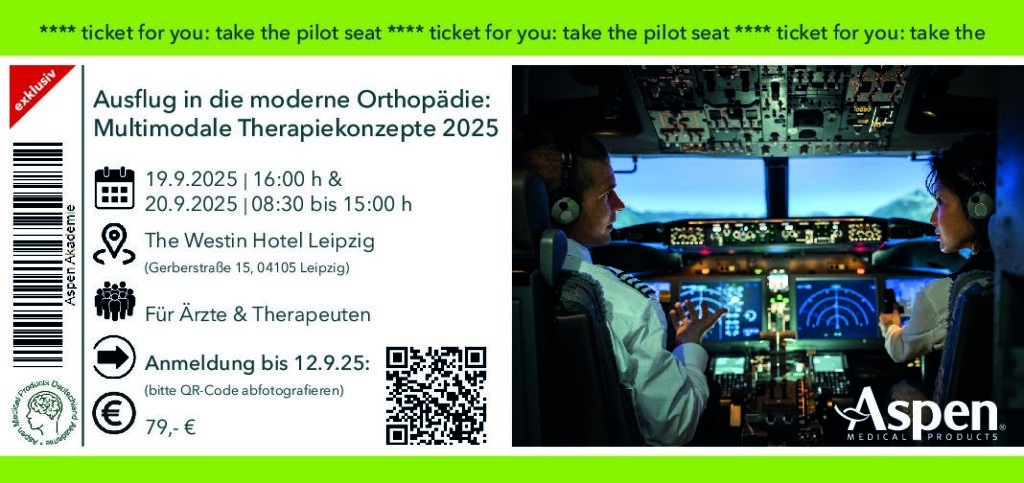Osteochondral defects of the knee, often associated with trauma or degeneration of the knee, are relatively common. The patella has been identified as the most common localisation of chondromalacia. Focal, chondral and osteochondral defects of the patella are characterised by reduced function of the knee and pain. The disorder can substantially limit common movements in daily life such as rising from a chair or going up and down stairs.
The pathogenesis of primary, focal osteochondral defects of the patella (PFODP) is still not fully understood. It is thought that negative stimulation due to overuse of the knee and local microcirculatory disturbances play a crucial role in the pathogenesis of PFODP. A wide variety of conservative/physical and drug treatments are used to treat PFODP. Surgery to repair the cartilage is indicated when symptoms of cartilage damage persist despite conservative and drug treatment. In summary, the therapeutic approach to PFODP largely mirrors that to osteoarthritis of the knee. However, it is still largely unclear whether combinations of conservative/physical and drug treatments for PFODP really result in better outcomes than individual measures. This question has now been investigated by a team of researchers from Germany and China (note from the editor: our scientific advisor Prof. Christoph Schmitz MD (LMU Munich) was also a member of this team). Specifically, the researchers performed a retrospective analysis of the medical records of all 81 patients with unilateral symptomatic PFODP who received treatment with either five intra-articular injections of hyaluronic acid at weekly intervals (iaHA) (n=45) or a combination of 5x iaHA and 5x radial shockwave therapy (iaHA+rESWT) (n=36) at the Center for Joint Surgery of the Third Military Academy in Chongqing/China in the period 1 January 2014 to 31 January 2018. Each intra-articular injection of hyaluronic acid was performed using 2.5 mL ARTZ Dispo (Seikagaku Corporation, Tokyo, Japan); the rESWT involved the use of a Swiss Dolorclast (Electro Medical Systems) with an EVO Blue handpiece and a 15 mm applicator (2000 radial shock waves per treatment); working pressure 1.8 – 2.5 bar; 6 – 8 Hz). Follow-up was performed after 6 weeks (W6), 3 months (M3), 6 months (M6) and finally (F) after a minimum of 12 months (mean: 37.6 months; maximum: 59 months).
Results
Compared with patients who received treatment with iaHA alone, those treated with iaHA+rESWT had statistically significantly lower mean VAS pain scores at W6, M3 and M6 (each 7.0 at baseline), significantly lower mean WOMAC scores at W6, M3 and F (59 and 62 at baseline) and a significantly smaller mean area of bone marrow oedema on sagittal MRI images of the patella at M3, M6 and F (no MRI was performed at M3) (69 mm2 and 75 mm2 at baseline). The decrease in the mean values between baseline and final follow-up in the patients treated with iaHA+rESWT was 82 % (VAS), 66 % (WOMAC) and 75 % (area of bone marrow oedema). No serious adverse reactions were observed.
Conclusion
The results of this study indicate for the first time that the combination of iaHS+rESWT to treat PFODP is safe and more effective than iaHA alone. This outcome, which is also of great interest for the treatment of other forms of osteoarthritis of the knee, is now also being further investigated in adequate, randomised controlled studies.
The preprint of the study is available at https://doi.org/10.1101/2020.07.29.20164111.
Conflict of interest: Prof. Schmitz acted as a part-time advisor to Electro Medical Systems (Nyon, Switzerland) up until the end of 2017. His research on rESWT at the LMU Munich has been supported with materials freely supplied by Electro Medical Systems since the beginning of 2018. Electro Medical Systems has had no influence on the content and design of this article, the acquisition, analysis and interpretation of the data presented and the decision to publish this article.
Autoren
ist Inhaber des Lehrstuhls II der Anatomischen Anstalt der Ludwig-Maximilians Universität München und wissenschaftlicher Beirat der sportärztezeitung.




